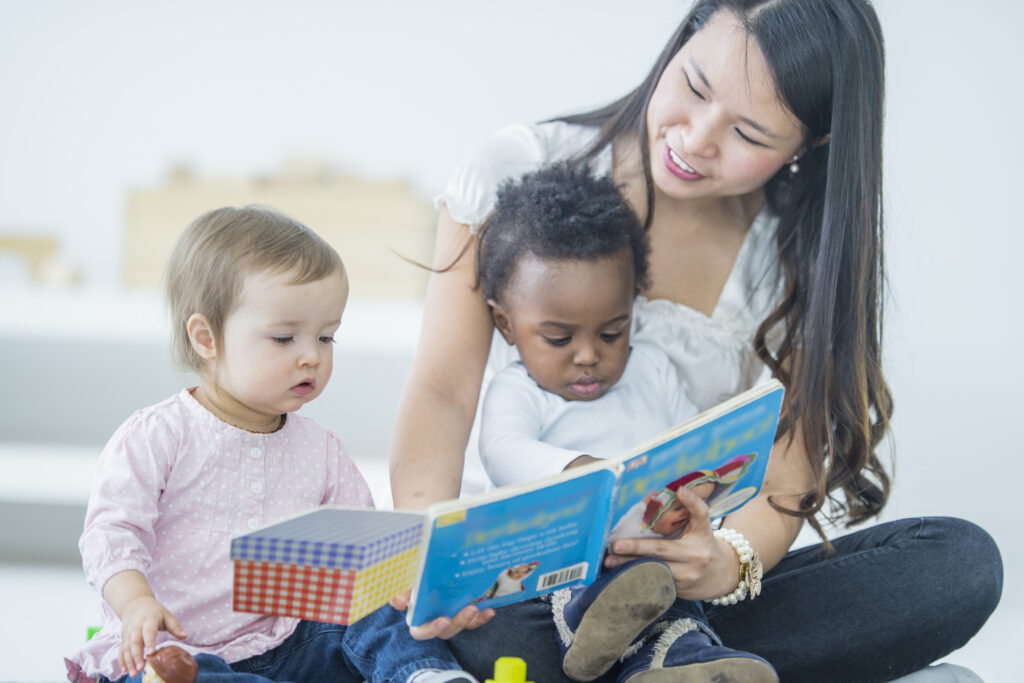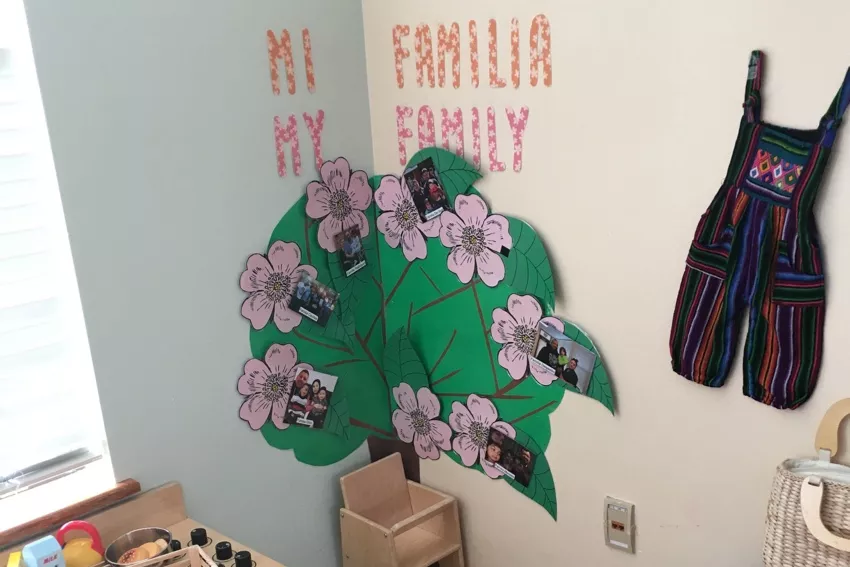6 Things to Love About Our New Infant and Toddler Curricula


Though frequently grouped together, anyone who has cared for infants and toddlers knows that a 6-month-old is very different from a 15-month-old. Programs and teachers working with infants and toddlers know not only that the age groups are unique, but so are the needs of each individual child. Having a distinct age-targeted infant curriculum or toddler curriculum can help teachers ensure each day is filled with individualized growth and learning. The Creative Curriculum for Infants, for children 6 weeks to 11 months old, and The Creative Curriculum for Toddlers, for children 12 to 27 months old, were created to support teachers by answering “What do I do now?” This allows teachers more time to connect with each child, nurture their growth and development, and delight in their discoveries.
Today, let’s examine six reasons to love our newest solutions created especially for the youngest children in your program(s).
1. Foundational Skills
For more than 40 years, Teaching Strategies has used a holistic approach to nurture the whole child’s learning and development. Observing and analyzing each child’s knowledge, skills, and abilities on these fundamental skills allows teachers to track and guide each child’s growth during these early years. To offer an even more robust view into how each child is learning and developing, we’ve adapted the validated and pediatrician-trusted Ireton skills and aligned them to our objectives for development and learning through the new Foundational Skills for Infants and Toddlers, offering a more discrete view into the crucial skills infants and toddlers are achieving during these earliest years of life.
-
- The Creative Curriculum for Infants includes a progression of Foundational Skills in four developmental domains: Social–Emotional, Physical, Cognitive, and Language.
- The Creative Curriculum for Toddlers offers two additional domains: Literacy and Mathematics.
2. Entry Screener
As children join your program, teachers can partner with families to gather crucial learning and developmental information by completing a simple Entry Screener. Teachers use their observations to answer questions about the knowledge, skills, and abilities the child is currently demonstrating. This information becomes the foundation of each child’s Individualized Child Plan and prompts suggestions for Skill Development Cards that are “just right” for each child’s unique needs.
-
- For infants, the Entry Screener prompts ask teachers to answer questions on skills and abilities that are developmentally appropriate for our youngest learners, such as “Does the child roll over from their stomach to their back?”
- For toddlers, the Entry Screener prompts ask teachers to describe each child’s abilities on developmentally appropriate skills for toddlers, such as “Does the child hold a crayon and jab at paper?”
3. Ongoing Guided Assessment
Upon completing the Entry Screener, each child will receive an Individualized Child Plan with suggested Skill Development Cards based on the skills they are working on now. As teachers select and implement the experiences on the Skill Development Cards , they will again be prompted to answer simple questions about the skills observed during the activity. This information becomes preliminary progression levels in GOLD. Gathering preliminary documentation has never been easier!
-
- The Skill Development Card experiences in The Creative Curriculum for Infants are tailored to the developmental skills most needed by infants. A sample prompt for Objective 4, “Demonstrates traveling skills,” is “Did the child roll over to reach for the ball?”
- Because toddlers are at a very different stage of development, the Skill Development Card experiences in The Creative Curriculum for Toddlers are made to support the development and learning that is most appropriate for toddlers. For example, a prompt for Objective 4, “Demonstrates traveling skills” might be “Did the child walk smoothly to put the ball in the basket?”
4. Pre-Populated Plans
Because so much of an infant or toddler’s day is involved in caregiving routines like eating, sleeping, dressing, and diapering or toileting, these routines need to be as thoughtfully planned as the playful experiences. We make it easy for teachers by offering pre-populated weekly plans based on 12 monthly themes designed especially to support children’s development through routines.
-
- The pre-populated plans in The Creative Curriculum for Infants center around developmentally appropriate themes and plans that focus on each child’s individual experience, such as “My Day With You,” “Hello, Hands!” and “Finding My Voice.”
- The Creative Curriculum for Toddlers offers themes and plans that encourage toddlers to explore their new abilities to walk, communicate, and connect with others. These themes include “Our Busy Day!,” “Hands in Action,” and “Sing With Me!”
5. Embedded Videos
Throughout The Creative Curriculum for Infants and The Creative Curriculum for Toddlers, teachers will find QR codes and links to support videos. These offer teachers step-by-step guidance, implementation tips, and “just-in-time” support on individualizing interactions.
-
- Support videos in The Creative Curriculum for Infants address the unique needs of children from birth to 11 months of age, including real footage of young infants and mobile infants demonstrating the skills being referenced.
- Support videos in The Creative Curriculum for Toddlers offer meaningful support for children from 12 to 27 months of age. This includes suggestions on how to adapt experiences based on individual needs and real footage of toddlers in real classrooms.
6. Books
All children benefit from books and early literacy experiences. For these ages, we know that colorful, sturdy books that can easily be cleaned and sanitized are best for inspiring an interest in snuggling close and looking at interesting images and hearing captivating stories. The Infant and Toddler curriculums each feature 12 beautiful, bilingual (English and Spanish), baby-proof books by Barefoot Books. These books feature simple captions and rhymes to support children’s language development. Characters and children featured in the books represent diverse cultural backgrounds and abilities.
-
- In The Creative Curriculum for Infants, books present simple, bold images in high-contrast colors. Because infants are fascinated by human faces, 6 of the 12 books feature close-up baby faces in high-contrast black-and-white photos.
- The Creative Curriculum for Toddlers features more complex text and engaging illustrations. Because toddlers are often excited to practice their growing vocabulary, these books introduce new vocabulary words and target phonological development through nursery rhymes, chants, and repeating phrases.
These materials and resources have been meticulously designed to help busy infant and toddler teachers, providing tailored solutions that enable them to individualize experiences and routines for each child, thereby minimizing the time spent searching for ideas. The Creative Curriculum for Infants and The Creative Curriculum for Toddlers aspire to honor these ages and support the teachers and caregivers who work with them by providing the most comprehensive curriculum solution available.


